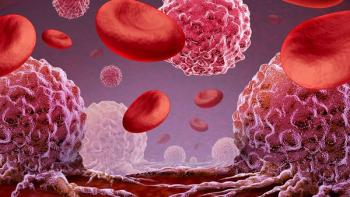
CAR-T Cell Therapy Combination Shows Promise in Relapsed/Refractory Leukemia
Administering Imbruvica with CAR-T cell therapy improved outcomes in patients with chronic lymphocytic leukemia, according to recent research.
Using chimeric antigen receptor (CAR)-T cell therapy plus Imbruvica (ibrutinib), a targeted treatment, could improve outcomes in patients with relapsed or refractory chronic lymphocytic leukemia (CLL), according to study findings presented during the 2018 American Society of Hematology Annual Meeting.
“We’ve heard about CAR-T cells for acute lymphoblastic leukemia, CAR-T cells for diffuse large B-cell lymphoma, and now I will show you how we are trying to improve CAR-T cell therapy for a different kind of disease called chronic lymphocytic leukemia,” said lead author Jordan Gauthier, M.D., of the Clinical Research Division at the Fred Hutchinson Cancer Research Center in Seattle.
CLL is the most common chronic leukemia in adults, with nearly 21,000 new cases being diagnosed each year in the United States. The cancer is a result of the bone marrow making too many lymphocytes — a type of white blood cell.
Researchers from the US and Canada conducted the multicenter phase 1/2 trial, which compared patients with CLL who received a regimen of chemotherapy medications cylophosphamide and fludarabine (Cy/Flu) followed by JCAR014, a type of CAR-T cell therapy, with a group of patients who received Cy/Flu with JCAR014 and Imbruvica for at least two weeks prior to therapy, until at least three months after CAR-T cell treatment.
Seventeen patients were treated in the Imbruvica group and 19 patients were in the non-Imbruvica group. Patients were similar in characteristics such as age, gender and ECOG Performance Status, which examines a patient in terms of ability to care for themself, daily activity and physical ability. More than 90 percent of participants in both groups previously progressed on Imbruvica, researchers noted. Patients were eligible to enroll in the trial if they were beyond their first line of therapy and had failed a combination of chemotherapy and an anti-CD20 therapy (or not be eligible for anti-CD20 therapy).
Researchers found that more patients responded to therapy in the Imbruvica group compared with the non-Imbruvica group (88 percent versus 56 percent, respectively). In the Imbruvica group, 10 of 12 patients (83 percent) who had disease in their lymph nodes prior to treatment ended up showing no signs of cancer or a decrease of the disease in the body compared with 10 of 17 (59 percent) in the non-Imbruvica group.
“This approach could lead to curable responses in patients with CLL who relapsed or who are refractory to ibrutinib,” Gauthier said.
The regimen that contained Imbruvica tended to be better tolerated, too. There were no differences between the incidence of severe (grade 3 or higher) cytopenias — a condition where there is a lower-than-normal number of blood cells — between the groups. In addition, Imbruvica in the drug combination did not appear to affect the frequency or incidence of severe neurotoxicity.
Cytokine release syndrome (CRS) is a serious side effect of CAR-T cell therapy that can be life-threatening. Signs of CRS include fever, nausea, headache, rash, rapid heartbeat, low blood pressure and trouble breathing. The Imbruvica and non-Imbruvica groups had a similar incidence of CRS (76 percent and 89 percent, respectively). However, none of the events in the Imbruvica group were severe, while 26 percent in the non-Imbruvica group were grade 3 or higher.
“There is evidence that ibrutinib may improve the function of CAR-T cells and may decrease the toxicity related to CAR-T cell therapy,” Gauthier said.





